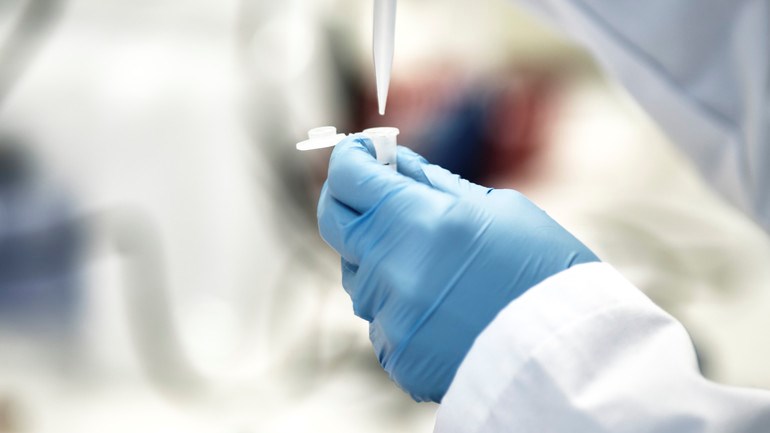“Fishing” for biomarkers could improve cancer diagnostics

Biomarkers can show if we carry a particular disease, detecting these can be difficult and require special tools. At the same time, an early detection of the biomarkers means the disease can be identified at a stage when it is still treatable.
Now, two researchers have recently defended their theses, which explore how diagnostic tools can be improved.
“The focus of the project is to provide diagnostic tools for personalised medicine. This is mainly based on next generation sequencing techniques where we can identify human DNA and try to understand the genetic changes which cause disease and cancer pathways. However, our focus is on the proteins that the genes are coding for.
”The aim is to get the right drugs and treatment track for the right person. When we want to study a particular ‘cancer signalling pathway’, we need to be able to measure pathway specific biological markers. These markers are not easy to identify because they are low abundant. We need to somehow target these markers and resulting methods can in the end provide some useful diagnostic tools.
”What we are basically doing is making some capture materials; if you think about it like a person going fishing, there are a lot of fish, but often people want just a specific type. My job is ‘fishing’ a type of cancer-related biomarkers from a very complex mixture. We are trying to achieve this via synthesising artificial receptors using an imprinting approach which is based on designing plastic antibodies that can perfectly fit for the biomarker of interest,” says Anıl Incel, who details his research in his dissertation ‘Amino acid sequence and side chain specific synthetic receptors targeting protein phosphorylation’.
Both Incel and Liliia Mavliutova are part of the BioCapture, a European training network funded by the European Commission under the Horizon 2020 Marie Skłodowska-Curie Action, which aims to developing the next generation tools for cancer research and diagnostics.
The two researchers are both using molecular imprinting technology to identify the two different biomarkers. The same protein can have both phosphorylation and glycosylation but the most important part for the researchers is to identify which one is related to disease.
“My dissertation focusses on the development of smart polymer materials that can be used for cancer research and diagnostics. In this project, we have developed synthetic receptors that target tumour-specific glycans,” says Mavliutova, who published her results in her thesis, ‘Molecularly imprinted micro and nanoparticles for cancer associated glycan motifs’.
Glycans are sugar molecules that play an important part in many biological processes in the body. When we are sick, the glycans usually change. Therefore, the altered glycans can be used as biomarkers, molecules that can signal the presence of diseases such as cancer, explains Mavliutova.
They have tested a new technology, "molecular imprinting", to develop synthetic receptors. The receptors are cheap, relatively easy to develop and more stable than, for example, natural receptors such as antibodies.
The receptors are called molecularly imprinted polymers (MIPs) and are plastic moulds that are produced in a template. When the template is removed, the imprint remains in the mould itself. This allows the MIP to identify and bind a specific biomarker. In this way, the biomarker can be isolated and more easily identified. It will be like a key that fits into a special keyhole, explains Mavliutova.
Text: Anna Dahlbeck & Adrian Grist